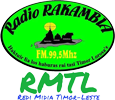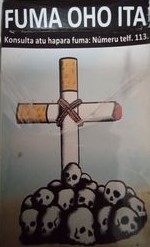By: Agnes Gianni Putri

The Arafura and Timor Seas (ATS) are part of the North Australian Shelf large marine ecosystem, a tropical marine area located between the Pacific and Indian Oceans. The region extends from the Timor Sea to the Torres Strait and includes the Arafura Sea and Gulf of Carpentaria. The ATS Region contains both near pristine and highly threatened coastal and marine ecosystems, which play important ecological and economic roles in the four littoral nations bordering the region: Indonesia, Timor-Leste, Australia, and Papua New Guinea.
A variety of anthropogenic factors threaten marine resources in the ATS Region, such as illegal, unreported and unregulated fishing, bycatch, unsustainable harvesting, and climate change. Marine debris and pollution originating from maritime activities such as oil and gas exploration and extraction, fishing and shipping pose additional hazards to marine life. Consequently, globally threatened coastal marine megafauna are at risk (including migratory, rare, and threatened species of turtles, dugongs, seabirds/shorebirds, sea snakes, cetaceans, sharks and rays), and fisheries species are overharvested in some parts of the region.
Marine Protected Areas (MPAs) can be powerful tools to address local threats and protect biodiversity, maintain or enhance fisheries productivity, and increase ecosystem resilience to changes in climate and ocean chemistry. They can also help maintain or enhance food security and sustainable livelihoods for communities and other stakeholders. However, MPAs can only achieve their objectives if they are well designed and managed effectively.
There are many existing or proposed MPAs in the Arafura and Timor Seas. In this context, a proposed regional scale MPA network provides an opportunity to consider large-scale biophysical, socioeconomic and cultural patterns, such as region wide patterns of connectivity of fisheries, charismatic, rare, threatened and protected species and transboundary uses and threats (e.g., fishing and climate change). The result was the first iteration of a MPA network design for the ATS Region (Figure A) that includes:
- All 93 existing and proposed MPAs allocated in National Marine Spatial Plans (comprising 271,588 km2);
- Thirteen Areas of Interest for establishing new MPAs identified in previous MPA Network design processes in Indonesia and Timor-Leste (comprising 14,772 km2); and
- Seven Areas of Interest for establishing new MPAs identified in this study (comprising 14,613 km2).
Before these Areas of Interest are established as new MPAs, some may need to be validated (ground-truthed to ensure they will provide the expected benefits for the MPA network), and proposals for new MPAs will need to be discussed appropriately with local stakeholders.
Regional Sea Turtle Action Plan for the Arafura and Timor Seas
The draft of the sea turtle Regional Action Plan (RAP) was consulted at national and regional levels to gather inputs from the government and other key stakeholders of the Arafura and Timor Seas (ATS) countries. The development of this draft was done in concert with the development of a status report of sea turtles in the ATS region. The status report was developed by collecting scientific data through desktop study, communication and consultation with organizations and experts in the ATS region. The data that was collected includes species and population trends and distributions, nesting sites, migratory patterns, connectivity status, genetic structure, threats, and legal infrastructure in the ATS countries related to sea turtles.
The sea turtle RAP is envisioned to address the threats with priority actions for the period of 2021-2026. While there is a suite of other actions and interventions that could be applied to sea turtle conservation, this plan addresses those that are considered priorities during this period. Sea turtles in the ATS region suffer mortality through a wide range of anthropogenic and natural impacts. These include bycatch in fisheries, direct take, predation, anthropogenic lighting, climate change and variation, tortoiseshell trade, discarded fishing gears, habitat loss, and more. Different life stages are impacted at different rates, and the impacts to each life stage vary.
The sea turtle RAP is not a standalone initiative. It is a complimentary programme and synergistic activity for existing national and regional conservation initiatives such as the Memorandum of Understanding on the Conservation and Management of Marine Turtles and their Habitats of the Indian Ocean and South-East Asia (IOSEA), the Marine Species Programme of the Secretariat of the Pacific Regional Environment Programme (SPREP), Coral Triangle Initiative for Coral Reef, Fisheries and Food Security (CTI-CFF), Australia National Recovery Plan, Indonesia National Plan of Action, and other time-bound initiatives.
The sea turtle RAP consists of six proposed priority themes, each with its objectives, actions, measures of success, and outcomes. The priority themes are 1) addressing discards of fishing gear given impact to sea turtle (regional), 2) establish a funding mechanism (regional), 3) addressing turtle bycatch in the Arafura Sea prawn fisheries (Indonesia), 4) enhanced conservation of sea turtle in Timor-Leste (Timor-Leste), 5) enhanced conservation of sea turtle in Indonesia with focus in Aru Island (Indonesia), and 6) enhanced conservation of sea turtle in Papua New Guinea (PNG).
| Regional Sea Turtle Action Plan for the Arafura and Timor Seas |
| Status of Sea Turtles in the Arafura and Timor Seas |






Discussion about this post